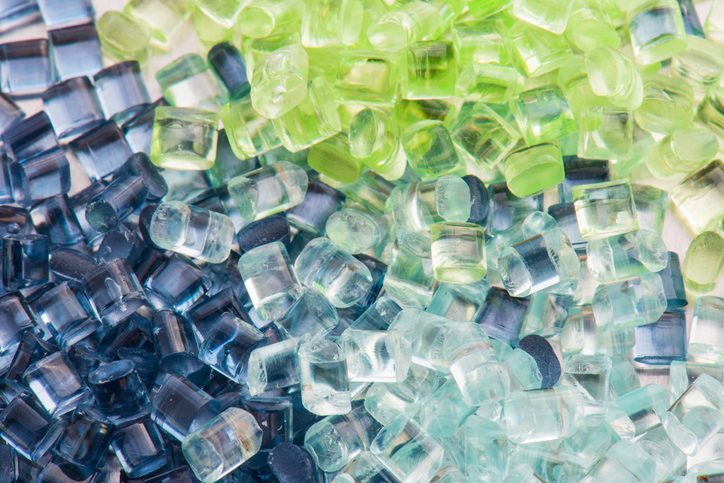Nanocellulose, or cellulose nanomaterials, is a term used to describe the various forms of nature’s super polymer – cellulose – at the nanometer level. That’s 10-9 meters, or 1/100,000 the diameter of a human hair! This renewable and natural material offers virtually limitless potential in a wide range of applications from food packaging to biomedical devices. Just as Silicon Valley grew up around Stanford University to become the heart of the tech industry, UMaine is driving an unrivaled center of nanocellulose innovation right here in Maine. We call it Nanocellulose Valley.
Nanocellulose is extracted from cellulose, the basic component of plant cell walls and the world’s most abundant natural polymer. Made up of nanofibrils that have been isolated from the cellulose fibers found in wood and grasses, nanocellulose exhibits a range of properties that make it an attractive and versatile biomaterial suitable for many uses.
The most common forms of nanocellulose are cellulose nanofibrils (CNF) and cellulose nanocrystals (CNC). The forms are differentiated by microstructures that make them suitable for different purposes. CNC usually has short, rod-shaped particles, while CNF particles are typically longer, more flexible and are often branched. CNC is typically used for transparent applications, such as films and barriers, while CNF is often used for reinforcing applications and viscosity modification. Microfibrillated cellulose (MCF), or cellulose ground down to microfiber length, is another common form of cellulose. Its long, thin fibers offer more surface area and it can be used to reinforce strength.
Welcome to Nanocellulose Valley
For 200 years, Maine’s economy has been deeply rooted in the forest products industry. Home to sustainably managed forests, skilled workers, and research expertise at the University of Maine, the state is a natural hub for forest-based innovations and the development of cutting-edge new products.
Today, nanocellulose, nature’s super polymer, is helping to build the forest products of the future. This renewable natural material offers virtually limitless potential in a wide range of applications from food packaging to biomedical devices.
At UMaine, we primarily work with nanocellulose that is derived from trees and wood pulp harvested from Maine’s sustainably managed forests. Over the last 10 years, there has been an explosion of interest in nanocellulose. A variety of methods can be used to extract nanocellulose from trees, and the University of Maine has become the home of Nanocellulose Valley given the expertise on campus in extracting and using these materials. These materials are being used and developed for a wide variety of applications, from food packaging to composites to biomedical devices.
Building Bone and Beyond
Biomaterials that address existing and emerging challenges in human health are in high demand, and this is one area in which nanocellulose shows real promise. One of many health care-related solutions that researchers at the University of Maine, led by Dr. Michael Mason, are developing is a nanocellulose composite material for use in orthopedics that promotes the growth of strong natural bone while safely dissolving over time, eliminating the need for metal devices that can be expensive, dense, stiff, prone to infection, and often require costly follow-up surgeries for removal. This composite could be used as a synthetic bone, surgical bone scaffold, or bone grafting implement, designed for dissolution and gradual replacement with native bone cells.
Revolutionizing Construction Materials
Nanocellulose has emerged as a valuable addition to construction and building materials, contributing to improved strength and environmental benefits in a host of products. One example is particle board bound with cellulose nanofibrils (CNF) rather than a formaldehyde-containing synthetic resin. The product made with CNF tests higher for fracture toughness and sequesters carbon and oxygen for its life span — typically decades. Eliminating the use of formaldehyde, a known human carcinogen, erases concerns about potentially harmful off-gassing in a product used widely in furniture and countertops.
UMaine holds a patent for the process to make particle board with CNF, and a similar process could be used to create composite fiber board for insulation and other composite wood products; lighter, stronger alternatives to traditional drywall; binders for paint that would reduce the need for petroleum-based binders and more.
Transforming Paper
As nanocellulose is commonly extracted from wood pulp fibers, some of the earliest applications have involved nanocelluose in papermaking – both adding the material to the furnish (the raw materials used for papermaking in liquid form), as well as adding it to the top of the sheet.
Incorporating nanocellulose into the furnish adds strength and can improve efficiency in the production process. Researchers and companies have found that adding nanocellulose (which can be produced on site at a paper manufacturer using their source material) increases the strength of the paper. As a result, some companies are able to remove a small amount of fiber, yet maintain superior performance.
Adding a small amount (less than six grams per square meter) of UMaine cellulose nanofiber (a type of nanocellulose) to the surface of paper produces dramatic improvements in porosity. Using traditional industry paper tests, air porosity decreases by orders of magnitude. Researchers at companies and at UMaine are investigating how these top-layer or surface applications can be used to introduce new paper grades with improved barrier properties, with the goal of competing with plastics.
Bring your curiosity and entrepreneurial spirit to Nanocellulose Valley! The University of Maine has pioneered and patented nanocellulose extraction techniques and is home to the only publicly accessible facility in the United States that can manufacture cellulose nanofibers (CNF) at a rate of one ton per day — and our production capacity is increasing! Across the university, researchers are exploring novel applications for this renewable material, leading to new discoveries relevant to industries from construction to biosciences.
This article was written by Colleen Walker, Director of the Process Development Center at the University of Maine. Discover the incredible innovations happening at the PDC.


Recent Comments